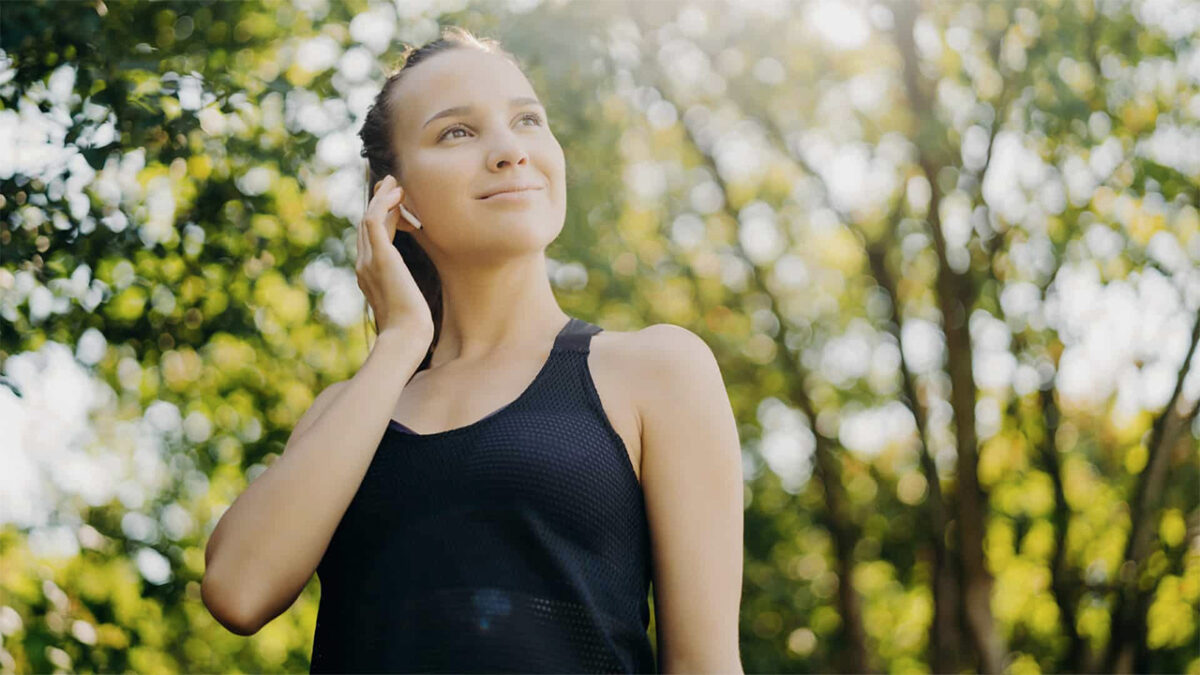In a world where wellness trends come and go, one ancient practice is making a powerful comeback: cold exposure.
Imagine stepping into the invigorating chill of icy waters or embracing the brisk air on a frosty morning—not just for the thrill, but as a natural method to supercharge your body’s healing processes and bolster its defenses. Whether you’re an athlete aiming to recover faster, someone looking to boost your immune system, or simply curious about this chilling trend taking over health circles, cold exposure offers remarkable benefits that are backed by science and steeped in tradition. Join us as we dive into the world of cold therapy and discover how this simple practice can transform your well-being from the inside out!
The concept of cold exposure is based on the principle that exposing our body to extreme temperatures can induce a stress response, triggering our body’s defense mechanisms and promoting healing. This process is known as hormesis, where a mild stressor can stimulate adaptive responses that ultimately lead to improved health and resilience.
There are various ways one can experience cold exposure, such as taking an ice bath, plunging into a freezing lake or ocean, or simply using a cold shower. The duration and intensity of each method may vary depending on individual preferences and specific goals.
Benefits of Cold Exposure:
- Boosts Immune System: One of the key benefits of cold exposure is its ability to boost our immune system. The sudden drop in temperature triggers an increase in white blood cell count, which helps fight off infections and diseases more effectively.
- Reduces Inflammation: Cold therapy has been shown to reduce inflammation by constricting blood vessels and decreasing blood flow to inflamed areas. This can be beneficial for people with chronic inflammatory conditions such as arthritis or muscle soreness.
- Improves Circulation: When exposed to cold temperatures, our body responds by increasing blood circulation in order to keep vital organs warm. This increased circulation also means more oxygen and nutrients are delivered throughout the body, promoting better overall health.
- Enhances Mood: Studies have shown that cold exposure can have a positive effect on mood disorders such as depression and anxiety due to its ability to stimulate the release of endorphins (feel-good hormones) in the brain.
- Weight Loss: Cold therapy has been linked with weight loss due to its ability to activate brown adipose tissue, also known as “good fat.” This type of fat burns calories to generate heat, helping to increase metabolism and burn stored fat.
- Improves Sleep: Exposure to cold temperatures has been found to improve sleep quality by lowering the body’s core temperature and promoting relaxation.
Cold Therapy for Healing and Recovery
Cold therapy plays a significant role in healing and recovery. By exposing the body to cold temperatures, you can reduce inflammation and pain effectively. This method is often used by athletes after intense workouts.
When muscles endure strain, they can swell. Cold exposure constricts blood vessels, which minimizes this swelling. It helps flush out metabolic waste products that accumulate during physical exertion.
In addition to muscle recovery, cold therapy aids joint health too. Conditions like arthritis find relief through reduced stiffness and improved mobility when ice or cold packs are applied regularly.
Many individuals experience faster recovery times due to better circulation following a cold treatment session. As blood flow increases once you’re back at normal temperature, nutrients reach damaged tissues more efficiently.
This natural approach aligns well with various rehabilitation protocols for injuries as well. Many professionals recommend it as part of a holistic recovery plan tailored to individual needs.
3 Different Methods of Cold Exposure (Wim Hof Method, Ice Baths, Cryotherapy)
Cold exposure offers various methods to experience its benefits, each with unique techniques and advantages.
1) The Wim Hof Method: Also known as “The Iceman” method, this technique was developed by Dutch extreme athlete Wim Hof. It involves a combination of breathing exercises and gradual exposure to cold temperatures. The core principles of this method are controlled hyperventilation, gradual cold exposure, and mindset training.
Controlled hyperventilation helps in saturating the body with oxygen while releasing carbon dioxide. This results in alkalizing the blood and increasing its pH level, leading to better blood flow and improved immune response. The gradual exposure to cold temperatures trains the body to adapt to stressors by activating its natural survival mechanisms. Mindset training focuses on developing mental resilience through positive affirmations and visualization techniques.
Results of Wim Hof Method:
The Wim Hof Method has shown promising results in improving immune system function, reducing inflammation levels, regulating hormone production, increasing energy levels, improving sleep quality, and reducing stress levels. It has also been used for treating conditions such as chronic pain, anxiety disorders, depression, and even autoimmune diseases.
2) Ice Baths: Taking an ice bath involves immersing oneself in a tub filled with icy water for a short period of time (usually 5-10 minutes). This method is believed to stimulate the sympathetic nervous system (responsible for fight or flight response), leading to an increase in heart rate and blood pressure.
This causes vasoconstriction (narrowing of blood vessels), which decreases blood flow to extremities but increases it towards vital organs like the brain and heart. Once out of the ice bath,the vasodilation (widening of blood vessels) response kicks in, leading to a rush of blood flow throughout the body. This process is believed to improve circulation, increase metabolism, and enhance immune system function.
Results of Ice Baths:
Ice baths have been popular among athletes for their ability to aid in muscle recovery and reduce inflammation after intense workouts. They also help in increasing mental toughness and resilience towards stressors.
3) Cryotherapy: Cryotherapy involves exposing the body to extremely low temperatures (usually between -110°C to -140°C) for a short period of time (2-4 minutes). It can be done through whole-body cryotherapy chambers or localized treatments using ice packs or liquid nitrogen sprays.
Results of Cryotherapy:
The extreme cold exposure triggers a fight or flight response similar to an ice bath. This leads to vasoconstriction followed by vasodilation, resulting in increased blood flow and improved circulation. The sudden cold temperature also activates the release of endorphins (feel-good hormones), providing pain relief and improving mood.
Tips for Safe and Effective Cold Therapy
Cold therapy has been used for centuries as a natural method to enhance the body’s healing and defense mechanisms. However, it is important to practice cold therapy safely and effectively in order to avoid any negative side effects.
- Start gradually. If you’re new to cold therapy, ease into it. Begin with short exposure times and slowly increase as your body adapts.
- Stay mindful of your limits. Listen to what your body is telling you. Shivering or extreme discomfort indicates it’s time to warm up.
- Practice proper technique for ice baths or cryotherapy sessions. Ensure the water is at a safe temperature. For ice baths, aim for 50-59°F (10-15°C) and limit exposure to 10-15 minutes.
- Consider using insulated gloves and socks if you’re doing prolonged exposure on extremities. Protecting sensitive areas helps prevent frostbite.
- Hydrate before and after sessions. Cold therapy can deplete energy levels, so keeping hydrated supports recovery.
- Always consult a healthcare professional if you have underlying health issues before starting any cold therapy regimen. It’s essential to ensure that this method suits your individual needs.
Incorporating Cold Exposure into Your Daily Routine
Incorporating cold exposure into your daily routine can be a refreshing change. Start small; even a quick splash of cold water on your face in the morning can invigorate you.
Consider ending your showers with 30 seconds of cold water. This simple practice not only wakes you up but also boosts circulation and enhances mood.
If you’re more adventurous, try stepping outside for a few minutes in chilly weather wrapped in minimal clothing. It’s an eye-opening experience that reconnects you with nature.
For those seeking structure, allocate specific days for ice baths or cryotherapy sessions each week. Making it part of your schedule helps create consistency and builds resilience over time.
Listen to your body as you adapt to these methods. Adjust the intensity based on how you feel, ensuring that it remains enjoyable rather than overwhelming.
Precautions and Contraindications for Cold Therapy
Cold therapy isn’t for everyone. It’s crucial to recognize conditions that may make it unsafe.
- Individuals with cardiovascular issues should approach cold exposure cautiously. The sudden shock of cold can affect heart rate and blood pressure.
- Those with respiratory problems, like asthma, might find their symptoms worsened by extreme temperatures. Cold air can trigger difficulty in breathing or wheezing.
- Skin sensitivities also warrant attention. Conditions such as Raynaud’s disease result in poor circulation in extremities, making cold exposure risky.
- Pregnant individuals should consult healthcare providers before starting any form of cold therapy due to potential impacts on the body.
- Always listen to your body during these practices. If discomfort arises, it’s wise to stop immediately and seek advice from a medical professional about your specific situation.
Integrating cold exposure doesn’t have to be daunting—it can become a refreshing part of your daily life. As more people discover its transformative effects on health and vitality, embracing cold therapy might just become one of the best decisions for enhancing overall wellness.
Moreover, studies have also shown that regular cold exposure can improve mental health by increasing endorphin levels in the brain. Endorphins are neurotransmitters responsible for feelings of pleasure and happiness – often referred to as “the runner’s high.” By activating these endorphins through cold exposure, we may experience reduced stress levels and improved mood.

It’s worth noting that while embracing the power of cold exposure can bring many benefits, it’s essential to approach it safely and gradually increase your tolerance over time. It’s best not to jump into extreme forms of cold therapy without proper guidance or training from a professional.
In conclusion, incorporating cold exposure into our daily routines can have a significant impact on our overall health and wellness. By boosting our immune system, improving circulation, reducing inflammation, and promoting mental well-being, we can optimize our body’s healing and defense mechanisms naturally. Don’t be afraid to embrace the power of the cold – your body will thank you for it.
For more tips, follow along with Drs. Denny and Mandy Warren at Generations Health and Wellness Center as they cover wellness topics every month that will be beneficial to your health journey. If you’re in Northwest Arkansas, consider scheduling an appointment today!



